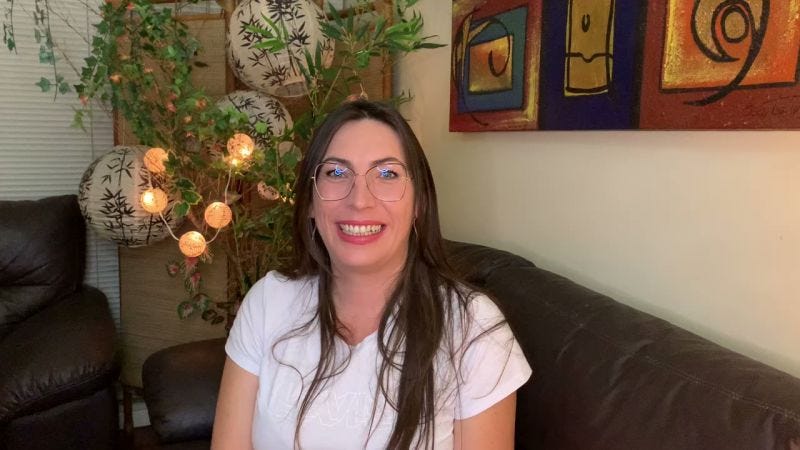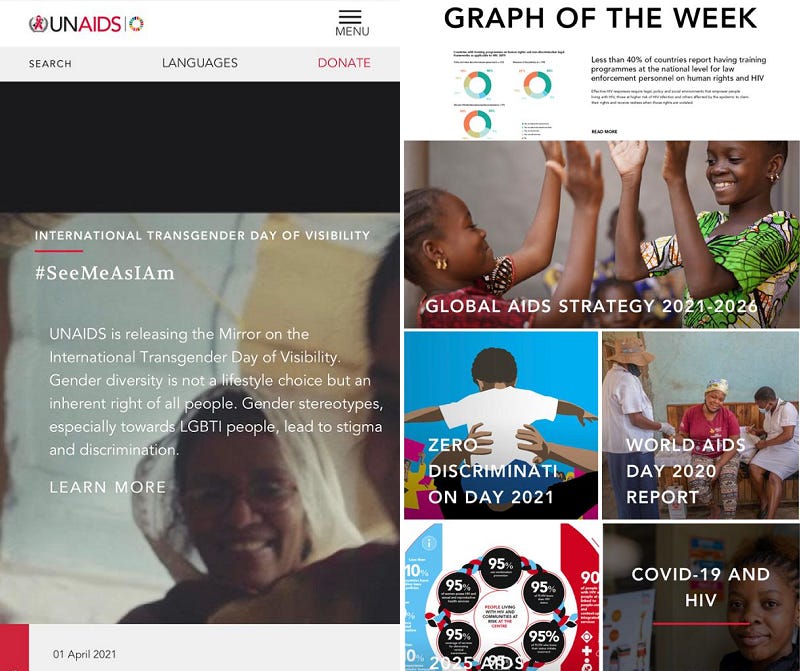“Let’s see our children the way they see themselves.”
UNAIDS #SeeMeAsIAm
UNAIDS - the nonprofit organisation working to end AIDS as a public threat by 2030 is stressing the fact for its latest campaign.
Released on International Transgender Day of Visibility(31st March) aims to break the taboo of gender diversity among children and aims to start a conversation within society and families about the rights of children who are in minorities and provide them with an equal opportunity to grow in a safe and loving environment as any child is entitled to.
The film ‘The Mirror’ tells a story of a young guy who finds more joy in being who is from inside, rather than the social framework. Rather than playing kite flying, he loves to dress up and dance on a folk number.
Later his mother and his grandmother catch him in the act and later join him. The campaign has been crafted by FCB India.
“You see, this story plays out on many levels,” Ms Bhattacharya said. “The broad point is we have to accept children as they are and, in this case, build up their confidence.” She pointed to the fact that 98% of transgender people in India leave their homes or are thrown out. Inevitably, many live on the street with no money or education, often relying on sex work.
“I wanted to show how they (transgender people) are seeing what they want to see and not the way the world sees them,” Ms Bhattacharya said.
Quoting an often-used phrase, she added, “It is easier to accept a child than mend a broken adult.”
With this latest campaign, UNAIDS is also highlighting the fact that the rejection from society and parents forces them to attempt suicide.
In addition, transgender people face discrimination and in certain countries can be arrested. And transgender women have some of the highest rates of HIV, up to 40% in some cases.

Ariadne Ribeiro, above, a Brazilian transgender woman, likens her own mirror moment as trying to search for herself within.
That said, it scared her too. “There was always a very big fear that people might see me through the mirror as I saw myself and my secret would be revealed, and I was not ready,” she said.
“I feel that the video brings a reality closer to the ideal of acceptance, something that I, at the age of 40, have not experienced.”
As a long-time transgender activist and now a Community Support Adviser at UNAIDS, Ms Ribeiro said that change is happening, but there needs to be more engagement.
It is believed that India has the largest population of transgenders in the world, transgenders in India face an uphill task of acceptance by society and are often exploited by their own community.
According to the National Human Rights Commission, about 92% of transgenders are deprived of the right to participate in any form of economic activity in the country, with even qualified ones refused jobs.
Be it first, second or third gender, everyone needs two things - love and respect. So the ad is uplifting mood and based on the hope for a better future.
However, the present has a grim reality. One that begs on every traffic signal. And we give them a rupee or two for good luck.
Anyways in addition to the film, the organization has planned the campaign really well.
The campaign finds itself on the first fold of the home page both web and mobile.
The web version has an auto video playing as you hit enter but on the mobile, the page has a simple image. Autoplaying video kills the website but not having it on mobile is such a brilliant move.
The film is accompanied by a lengthy blog post that not only talks about the campaign, how the film was conceived but also shares viewpoints from other transgenders - what they feel about the campaign and the challenges that they faced.
The campaign is also promoted on social media - Facebook, Twitter and Instagram. Along with the video, visual stat creatives are being shared. I am sure that this will finds its way to the email subscribers since I am not their subscriber so I am not aware of the strategy there.


UNAIDS Website and Donation page
Every campaign also provides an opportunity to look at two important aspects of online fundraising or giving - The Website and Donation page.
The mobile website speaks about the latest #SeeMeAsIAm campaign. And the second fold is all about hard numbers in the form of charts and stories about the impact.
Additionally, web presence has a long list of categories. Since mobile comes with space constraint the organization has displayed the three most important things - Search, Language and Donate. Great insight for nonprofits to treat mobile and web experience differently.
If your organisation has some hard-hitting number and you have the budget to hire a good designer to showcase them in beautiful charts then this is one of the best ways to communicate. UNAIDS has both and hence it speaks a lot on the home page of the website.
Even the stories section has been written with effort. Data and stories play an impactful role in online communication for UNAIDS.
But their Donation Page has been a slight disappointment. Again numbers play a role in why one should donate so I don’t see why one needs to repeat what the organization is doing just before the donation dialogue box.
Can the donation dialogue box be smarter?
At least I didn’t find the “More” box exciting. Once you click on the more button you get an option to donate any other value other than the listed ones. I find it unnecessary try to be a smart ass.
Also, the “Learn More” section at the end of the donation page is it required? Why do you want to increase questions in the mind of the donor when she is on the page to donate.
Simpler the process, more relaxed is the donor in giving you her money.
Every human being and animal deserves love and respect. I would like to live in such a world but right now seems tough.
Anannyah Kumari Alex, the first transgender person to contest an assembly election in Kerala, has decided to withdraw from the election on account of harassment and threats by leaders of the Democratic Social Justice Party which nominated her.
P.S. UNAIDS’s latest global campaign targets India for reasons discussed above but the organization isn’t targeting Indians when it comes to online fundraising. Interesting?





